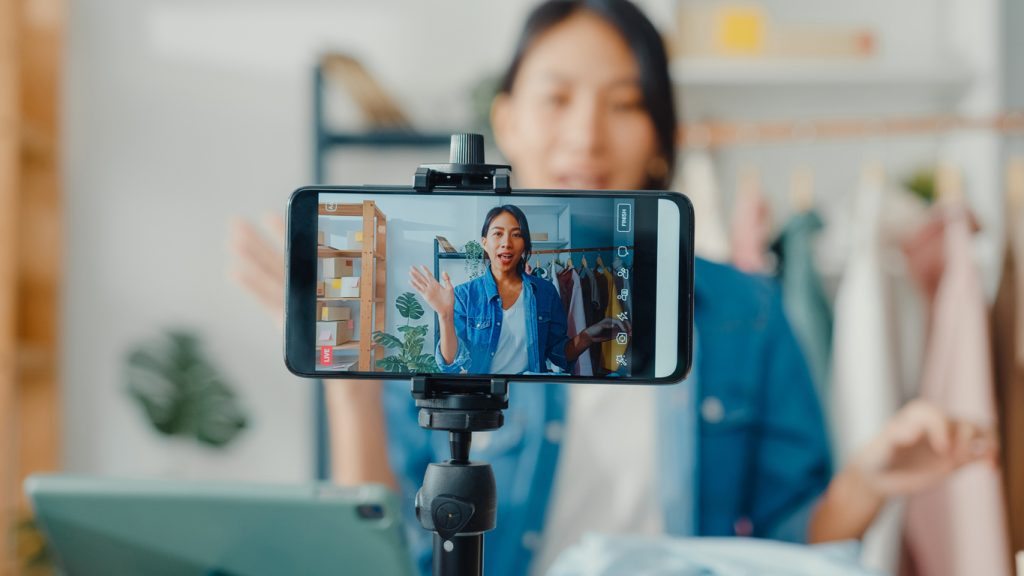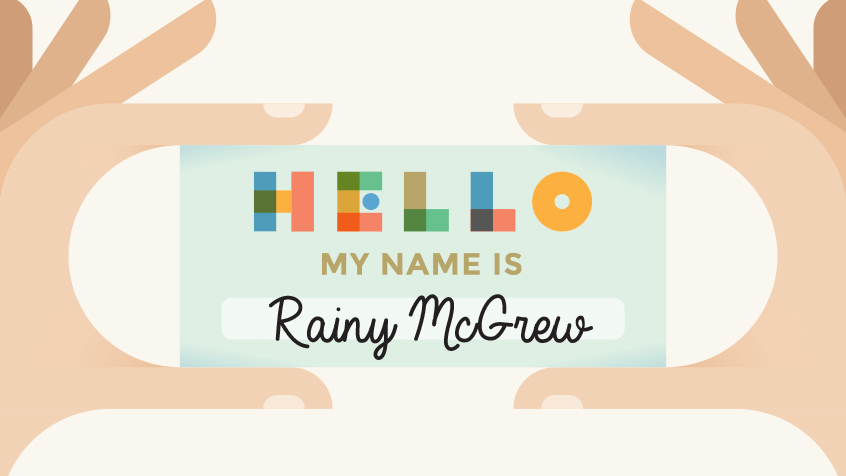It’s that time of year again when we look at the coming year and predict 2025 marketing trends. For Out-of-Home media trends, some are not necessarily new but are continuations of existing shifts. Digital Out-of-Home will continue to grow. The industry will continue to work toward more reliable and cohesive impression metrics for planning. Media companies, manufacturers, and printers will continue working on more sustainable and eco-friendly processes. And no surprise, we will continue to talk about programmatic, seemingly at every turn.
But since we have talked about all of these at length this year, I wanted to look at some of the other big 2025 marketing trends in general and discuss what they mean for Out-of-Home. As I was writing this, what struck home for me was how adaptable OOH media can be. Whatever changes around it, whatever shiny object captures the attention of marketers, Out-of-Home can integrate, adapt, and maintain its ability to serve as a workhorse in any media plan, one that delivers value and elevates other media channels.
AI Takes A Big Leap Forward for OOH:
As we enter 2025, AI has transformed from a high-profile novelty to a strategic business imperative, and the Out-of-Home media world is no exception. What was once viewed with curiosity in 2024, with much of the focus on Generative AI, is now becoming a key focus for systematic integration across all aspects of the business.
For OOH media, AI is revolutionizing how we understand and engage with consumer landscapes. AI is great at dealing with large amounts of information. By leveraging sophisticated data analysis capabilities, AI will help analyze massive information streams from mobile devices, geolocation services, and social media platforms. This isn’t just about collecting data—it’s about extracting meaningful insights that drive smarter advertising decisions. OOH has been working toward more sophisticated audience insights for several years, and AI is just the tool to make that practical and actionable.

AI’s ability to detect more nuanced behavioral patterns means advertisers will be able to pinpoint precise audience moments with unprecedented accuracy. Imagine understanding not just where people are but predicting where they came from, where they’re going, and why. Traffic pattern analysis will go beyond just impression delivery, offering deep insights into consumer movement and potential interaction points.
The result? Hyper-localized targeting that maintains broad scalability. Advertisers will craft campaigns that feel relevant to specific communities while maintaining the reach of traditional OOH strategies and do it all faster and more efficiently than ever.
2025 Marketing Trends for Retail Media & OOH:
Retail media is emerging as a powerhouse marketing channel with a compelling narrative that bridges physical and digital advertising landscapes. The National Retail Federation’s recent data underscores a pivotal insight: despite the digital revolution, 80% of shopping still occurs in physical stores, presenting an immense opportunity for brands to connect with consumers at the most critical moment—right before purchase.
The impact cannot be overstated. According to the Dentsu Consumer Navigator report, a remarkable 75% of US consumers are influenced by in-store advertising, highlighting the potent persuasive power of retail media. This isn’t just another marketing channel; it’s a strategic touchpoint at the intersection of awareness and action.

What makes retail media so compelling? It offers unique advantages that set it apart from other media channels. As a low-funnel media tactic, it represents the last possible point of influence before a purchasing decision. Retail networks can leverage first-party data, enabling razor-sharp targeting, while digital screens provide streamlined campaign deployment and flexibility for rapid creative iteration.
Marketers are taking notice. A recent survey reveals that 41% of global marketers plan to increase their retail media investments in 2025.
It is important to remember that while retail media can be purchased through platforms similar to digital advertising, the way it works is much more like OOH. It is a one-to-many communication channel that doesn’t rely on direct response mechanisms like website clicks.
This isn’t about replacing existing marketing strategies but complementing them with a hyper-focused, contextually relevant approach that meets consumers exactly where they’re making decisions.
Attention takes center stage as a key metric:
Marketers are always looking for ways to better understand what really drives consumer action. Over the last couple of years, attention has emerged as the new currency of marketing effectiveness, and that will continue to be one of the 2025 marketing trends. Our understanding of how engagement translates to tangible business results is becoming increasingly sophisticated, revealing that not all impressions are created equal.
Recent research illuminates the importance of attention in driving action. Realeyes’ collaborative study with Teads demonstrated a significant correlation: a mere 5% increase in visual attention can generate a staggering 40% lift in brand awareness. This is not just an incremental change that can be easily overlooked—it can make a big difference to the overall effectiveness of a marketing plan.

Despite what some may think, out-of-home media is powerful at capturing attention. Research by Dr. Karen Nelson Field reveals that an impressive 89% of OOH advertisements maintain active attention beyond the critical 2.5-second threshold—the point at which solid memory formation begins. This makes OOH an exceptionally powerful channel for delivering the message to an audience and providing value to a brand.
Marketing is beginning to adopt attention as an important metric and is developing a more nuanced approach to measuring meaningful engagement. Developing comprehensive attention metrics that go beyond traditional impression delivery and reach for the Out-of-Home industry will be critically important. It’s about understanding not just how many people see an advertisement but how deeply they engage with it. Attention is becoming a key measure of advertising effectiveness, and OOH is perfectly positioned to lead this transformation.
Influencer Marketing comes to OOH:
Influencer marketing has rapidly evolved from a niche strategy to a global powerhouse, with the market exploding to $24 billion in 2024—a threefold increase since 2019. This isn’t just growth; it’s a fundamental shift in how brands connect with consumers, with 69% of people now trusting influencer product recommendations.
The landscape is moving beyond celebrity endorsements toward more authentic, targeted approaches. Brands increasingly prioritize nano and micro-influencers, who bring genuine connection and credibility. Recent studies show a strong preference for smaller-scale influencers: 44% favoring nano-influencers and 26% micro-influencers, compared to just 17% for macro-influencers and 13% for celebrities.

OOH media works with the influencer revolution in some surprising ways. A groundbreaking study by the Harris Poll and OAAA reveals the tremendous potential of influencer-driven OOH campaigns. The numbers are eye-opening:
- 67% of consumers say they would take action after seeing a product endorsed by an influencer in an outdoor advertisement.
- Millennials show a 72% likelihood to take action, while Gen Z delivers an impressive 83%.
- Overall, 46% of consumers agree they’re more likely to purchase or try a product when an influencer promotes it through an OOH advertisement.
This trend points to a broader shift toward deeply connected and credible micro-influencers within their specific areas of interest. It’s not just about reach or high-profile celebrity influencers but about authentic, targeted influence.
As brands refine their strategies, the intersection of influencer marketing and OOH presents an exciting frontier of consumer engagement, blending digital authenticity with physical presence and will be one of the key 2025 marketing trends.
Creator communities become a key source for OOH.
Another important and exciting trend is the emergence of creator communities as powerful content generators and partners to marketers. Kantar’s Creator Digest reveals a compelling insight: creator-led content in the US is a brand differentiator that exceeds benchmarks by an impressive 4.85x, signaling a fundamental change in how we approach advertising creative.
Trust has become the new marketing currency. According to Edelman’s research, 81% of consumers cite trust as a crucial factor in their purchasing decisions. User-generated content has emerged as a key strategy for building authentic connections with target audiences, and OOH is perfectly positioned to leverage this trend.

The future of OOH advertising isn’t just about creating content for a location—it’s about creating content from the location. This hyperlocalization approach transforms advertisements from generic messaging to genuine community conversations. By tapping into local creator communities, brands can develop creatives that speak not just to an audience but also as part of the audience.
The convergence of digital OOH and AI technologies makes this localized approach not only possible but highly scalable. Imagine dynamic billboards that reflect local creators’ unique voices and visual language, adapting in real-time to community nuances and cultural contexts.
Brands are adding a new layer to their communications. It moves away from simply talking to an audience and toward leveraging the audience to speak for them. Creator communities offer a pathway to advertising that feels less like a broadcast and more like a conversation, less like a sales pitch, and more like a shared experience.
Keeping Pace With The 2025 Marketing Trends:
The marketing landscape is undergoing significant transformations, driven by technological advancements, societal and demographic changes, and evolving consumer engagement strategies. The industry is experiencing a pivotal shift across several important facets, and they all intersect with Out-of-Home in some fascinating ways. Some will help reshape OOH, while others can be shaped by it.
- AI Integration: Sophisticated data analysis enabling hyper-localized OOH targeting and deeper consumer insights
- Retail Media Expansion: An inherently OOH medium that also displays some of the powerful features of digital and offers a premium opportunity to speak with consumers
- Attention-Based Metrics: Moving beyond traditional impressions to measure meaningful engagement, with research showing OOH’s exceptional ability to capture audience attention
- Influencer Marketing Evolution: Integrating nano and micro-influencers into OOH campaigns can effectively tap into niche communities and drive action
- Creator Community Engagement: Developing localized, authentic content that transforms advertisements into community conversations
These 2025 marketing trends highlight the adaptability of Out-of-Home media and how it can continually adapt to changes in the marketing ecosystem and consumer behavior. By embracing AI, focusing on nuanced metrics, and prioritizing authentic, targeted content, the OOH industry is positioned as a dynamic and innovative marketing channel that bridges digital sophistication with physical presence.
Our team loves to talk about Out-of-Home, and we really love to think creatively about how OOH can compliment what you are doing with your marketing plans. Give us a shout to learn more about how we can help add this powerful media to your plan.





